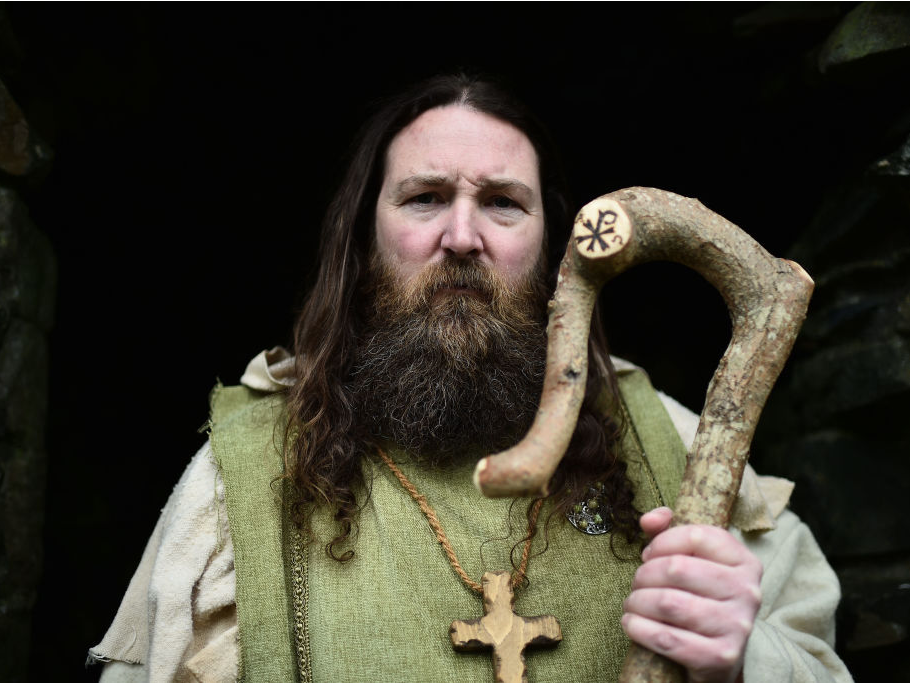• Saint Patrick was kidnapped from England at the age of 16 and sold into slavery in Ireland.
• He escaped after six years, only to return to convert Ireland to Christianity.
• The medieval saint continued to lead a dangerous life, as he came into conflict with local power-brokers.
• Today, we celebrate his feast day with green milkshakes, green rivers, green beer, green donuts, and binge drinking.
Saint Patrick is ostensibly the reason we wear green and consume 13 million pints of Guinness on March 17 every year.
Of course, typical modern St. Patrick's Day debaucheries don't have much to do with the fifth-century missionary behind the day itself.
In fact, Patrick - or Pádraig - actually led a life filled with problems far bigger than picking a good spot to day drink at a parade.
Patrick hailed from a Romano-British background. His dad was a deacon and his grandfather was a priest, but he wasn't very religious growing up.
As he writes in his "Confession," that changed when he was about 16 years old. Patrick was attacked and kidnapped by Irish pirates who had broken into his family's villa.
He was sold into slavery in Ireland. Patrick credited the experience with renewing his religious faith.
"After I arrived in Ireland, I tended sheep every day, and I prayed frequently during the day," he wrote.
Six years passed by before Patrick said he heard a voice telling him to return home. He escaped and walked 200 miles to a port, where he found a ship preparing to leave for England.
"I said I needed to set sail with them, but the captain was not at all pleased," he wrote. "He replied unpleasantly and angrily: 'Don't you dare try to come with us.'"
Later on, the captain apparently had a change of heart.
"I began to pray while I was going; and before I even finished the prayer, I heard one of them shout aloud at me: 'Come quickly - those men are calling you!' I turned back right away, and they began to say to me: 'Come - we'll trust you. Prove you're our friend in any way you wish.'"
Despite almost starving on the journey, Patrick made it back home, became a cleric in continental Europe, and then headed back to Ireland as a missionary.
His life didn't get less weird from there. As a foreigner, he was not plugged into the land's kinship networks and would therefore receive limited legal protections, according to "The Irish in Early Medieval Europe."
He also clashed with local power-brokers, possibly even writing an open letter chastising one for selling some of his followers into slavery. Patrick reported getting robbed, beaten, accused of financial fraud, arrested, and nearly executed over the course of his career.
Legends have him battling armies of witches and druids, turning his walking stick into a tree, and banishing the snakes from Ireland (although those reptiles were probably just a metaphor for Ireland's polytheistic roots). He supposedly died on March 17, which became his feast day.
Today, Patrick is Ireland's primary patron saint (a role which he shares with St. Brigit of Kildare and St. Columba), and also has a pretty long and random list of patronages, including engineers, paralegals, Nigeria, Montserrat, the Archdioceses of New York, Newark, Missouri, Murcia, Melbourne, and Loíza, and Rolla.
And, of course, he's invoked against snakes.

